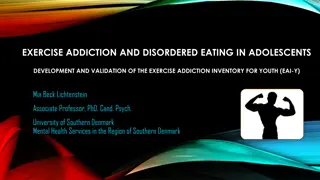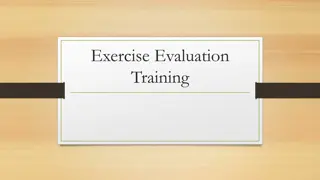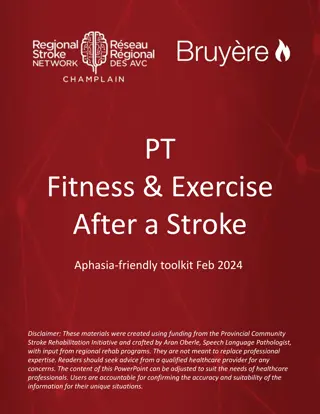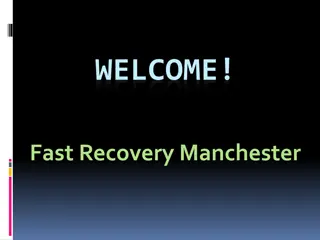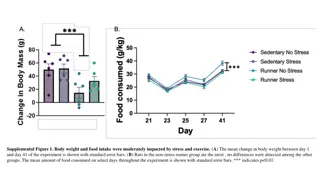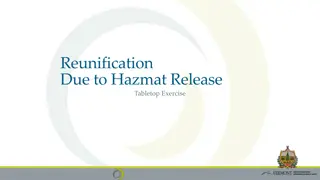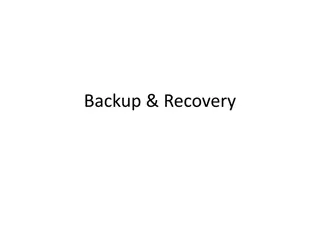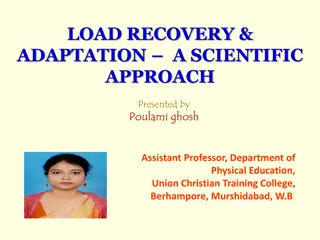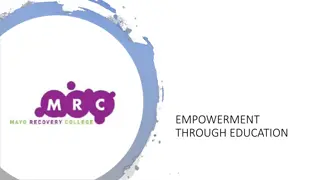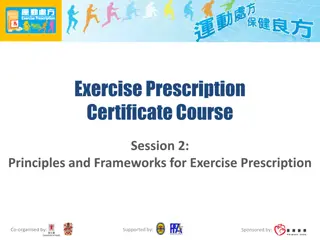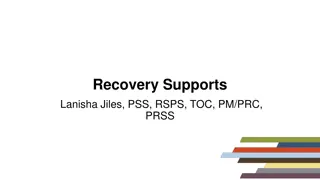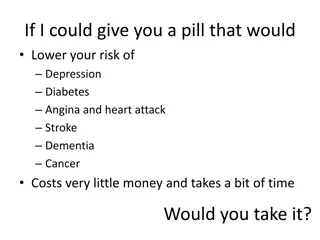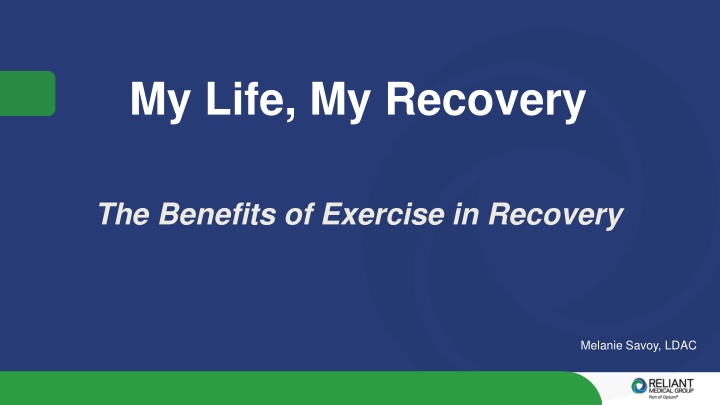
Benefits of Exercise in Recovery: A Holistic Approach
Discover the significant impact of exercise on mental and physical well-being during the recovery process. Explore the physiological and psychological benefits of being active, along with how exercise provides structure, routine, and aids in the overall recovery journey. Learn about the four types of exercises that can enhance your recovery experience.
Download Presentation

Please find below an Image/Link to download the presentation.
The content on the website is provided AS IS for your information and personal use only. It may not be sold, licensed, or shared on other websites without obtaining consent from the author. If you encounter any issues during the download, it is possible that the publisher has removed the file from their server.
You are allowed to download the files provided on this website for personal or commercial use, subject to the condition that they are used lawfully. All files are the property of their respective owners.
The content on the website is provided AS IS for your information and personal use only. It may not be sold, licensed, or shared on other websites without obtaining consent from the author.
E N D
Presentation Transcript
My Life, My Recovery The Benefits of Exercise in Recovery Melanie Savoy, LDAC
Exercise Benefits Recovery 2
Exercise & Recovery A multi faceted approach to working on recovery is the most beneficial. Holistic approaches can make a significant difference. Integrating exercise into the recovery process can have profound effects on both mental and physical well-being. 3
Physiological of Benefits of BeingActive Regular activity helps treat diseases such as: Regular exercise can increase the brain s amount of new nerve connections, which helps the brain s healing process in recovery Diabetes High blood pressure High cholesterol Stroke Cancer Arthritis Osteoporosis Anxiety Depression Helps control weight 4
Psychological of Benefits of Being Active Reduces levels of stress and anxiety Increases energy Improves mood Promotes better sleep Improves some aspects of cognitive function Reliable routine Filling spare time Higher self-esteem Reduces risk of relapse 5
How Does Exercise Help in the Recovery Process? Exercise provides structure and routine: Helps with staying busy Relieves stress Boosts mood Helps with self esteem Improves sleep Meeting new people Regular exercise can increase the amount of oxygen and nutrients flowing to your body s muscles. This results in a greater capacity to release energy throughout the day. These higher energy levels then make daily tasks easier and often boost the ability to resist the urge to use substances. 6
Four Types of Exercise Flexibility Exercises Endurance Exercises Commonly called Aerobic exercises => increases breathing an heart rate Also referred to as stretching Aim for a program of stretching every day or at least three to four times a week Aim for at least 150 minute/week Try brisk walking, swimming, jogging, cycling, dancing, or classes Try neck rolls, shoulder rolls, hamstring stretches and ankle rolls Strength Exercises Balance Exercises Also called resistance training Helps to improve stability and prevent falls Incorporate this into your daily exercise routine Aim for completing balance exercises twice a week Try standing on one foot, lifting your leg out to the side or behind you Try lifting weights, doing push-ups, squatting, or using a resistance band 7
Whats Next?* Research a regime or create our own* Get the necessary items (sneakers, clothes, etc.) Make a schedule Track your progress Make exercise fun * Before starting any exercise regime, check with your doctor 8
Group Discussion Group Discussion 9

